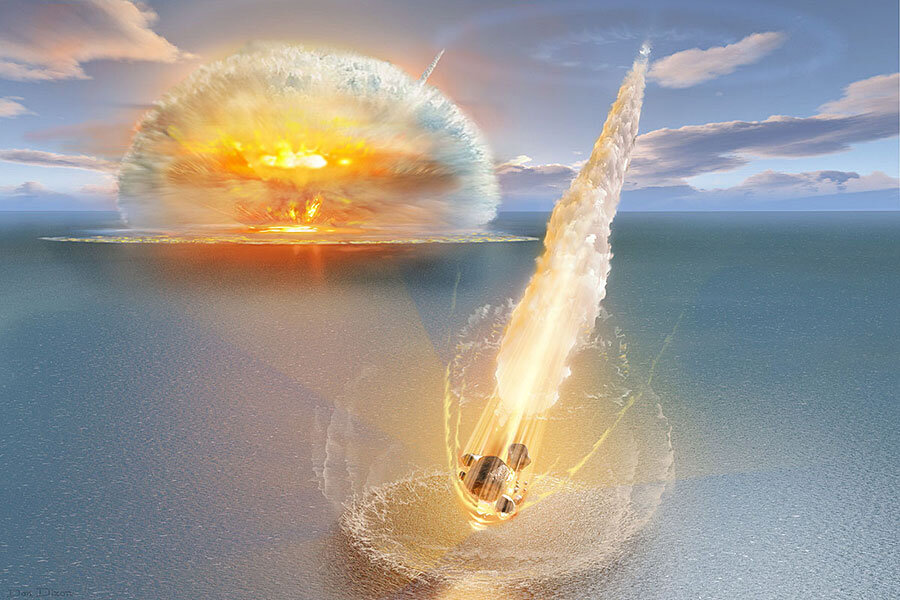Could this double crater hold secrets of mass extinction?
Loading...
Boom! Boom!
Two meteorites slammed into the earth at the same time, about 458 million years ago, say scientists.
Researchers have found two impact craters in Jämtland, Sweden, just under 10 miles from each other.
One crater stretches an impressive 4.7 miles wide. The other is a bit smaller, not quite reaching 2,300 feet across.
"Around 470 million years ago, two large asteroids collided in the asteroid belt between Mars and Jupiter, and many fragments were thrown off in new orbits. Many of these crashed on Earth, such as these two in Jämtland," said Erik Sturkell, professor of geophysics at Sweden's University of Gothenburg, in a university release.
When these chunks of space rock hurtled toward Earth, Sweden did not look as it does today. Jämtland was under a shallow sea.
The meteorites struck spots where the water reached just over 1,600 feet, shooting water away upon impact. For about 100 seconds, these new craters were dry.
"The water then rushed back in, bringing with it fragments from the meteorites mixed with material that had been ejected during the explosion and with the gigantic wave that tore away parts of the sea bed," said Professor Sturkell.
It was that material and the material collected on top of the craters over the years that allowed researchers to date the craters.
Such a simultaneous hit is rare, and this instance may be the first conclusively proved double impact on Earth.
Such an impact could hold clues to extinction events. Other impact craters have been linked to mass extinctions by scientists.
The Chicxulub crater in Mexico was determined to be about 65.5 million years old, striking Earth and possibly triggering the demise of the dinosaurs, according to scientists.
Another crater, found in Antarctica, may have caused the greatest mass extinction on Earth, some 250 million years ago. Scientists suggest that this impact may have played a role in the breakup of the Gondwana supercontinent.
Perhaps these double craters in Sweden could tell tales of another such mass extinction.






